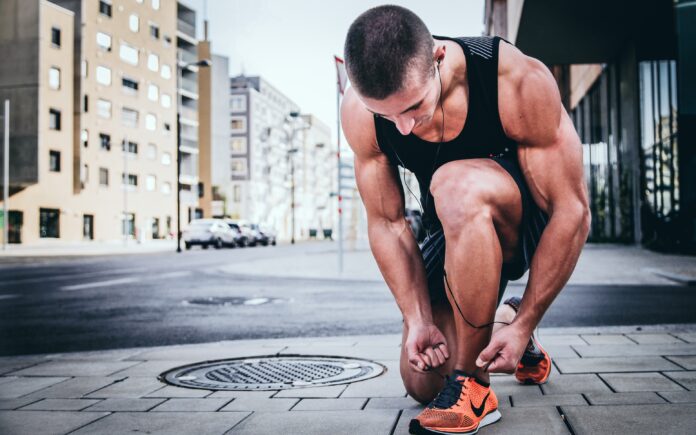Streetlifting is an emerging physical fitness discipline that has gained considerable popularity in recent years. Combining elements of traditional weightlifting with urban environments and improvised equipment, streetlifting offers a unique and exciting approach to strength training. Streetlifting is characterized by its focus on functional strength, explosive power, and adaptability to diverse surroundings. In this comprehensive exploration, we will delve into the intricacies of streetlifting, discussing its origins, training methods, equipment, and its impact on overall fitness and well-being.
Streetlifting, as the name suggests, takes place in the streets, parks, and other urban settings. It diverges from traditional weightlifting by incorporating elements of the urban landscape as part of the training regimen. Streetlifters utilize benches, railings, walls, and other structures commonly found in urban environments to perform exercises and develop strength. This unconventional approach not only adds a novel dimension to training but also allows streetlifters to adapt their workouts to any location, making it an accessible and versatile discipline.
The origins of streetlifting can be traced back to the rise of the calisthenics movement, which gained popularity in the early 2000s. Calisthenics enthusiasts sought to challenge the limitations of traditional gym-based workouts by utilizing bodyweight exercises and creative approaches to training. Over time, individuals within the calisthenics community began incorporating elements of weightlifting into their routines, giving birth to what is now known as streetlifting. The fusion of bodyweight exercises with weightlifting techniques offered a comprehensive training approach that focused on strength, mobility, and functional movement.
Streetlifting workouts typically consist of a combination of bodyweight exercises and improvised weightlifting movements. Push-ups, pull-ups, dips, and squats are common foundational exercises in streetlifting routines. These exercises build core strength and develop functional movements that mimic real-life activities. Streetlifters also incorporate weighted vests, resistance bands, sandbags, and even everyday objects like backpacks filled with heavy items to increase resistance and intensity.
One of the defining characteristics of streetlifting is its emphasis on improvisation and resourcefulness. Streetlifters often find themselves in situations where traditional gym equipment is not readily available. However, rather than seeing this as a limitation, streetlifters view it as an opportunity for creativity. They adapt to their surroundings and use whatever is available to create their own unique training apparatus. For example, a streetlifter might use a sturdy tree branch as a pull-up bar or a park bench as a platform for step-ups and box jumps. This resourcefulness not only enhances the physical challenge but also cultivates a mindset of adaptability and resilience.
Streetlifting is not just about the physical aspect; it also encompasses a sense of community and self-expression. Streetlifters often gather in urban spaces to train together, exchange knowledge, and push each other to reach new heights. These training sessions foster camaraderie and a shared sense of purpose, creating a supportive environment for personal growth and development. Furthermore, streetlifting allows individuals to express their creativity through their training routines, as they constantly seek new challenges and innovate their approach to workouts.
Beyond the physical benefits, streetlifting offers a range of advantages for overall fitness and well-being. The combination of bodyweight exercises and weightlifting movements promotes functional strength, enhancing the ability to perform everyday tasks with ease. Streetlifting also improves muscular endurance, flexibility, and mobility, resulting in improved joint stability and reduced risk of injuries. Additionally, the dynamic nature of streetlifting workouts contributes to cardiovascular fitness, as they often involve high-intensity intervals and explosive movements.
Furthermore, streetlifting transcends the traditional notion of fitness as a solitary pursuit. It fosters a sense of connection to the environment and the community. By utilizing the urban landscape, streetlifters develop a deeper appreciation for their surroundings, transforming the city into their own personal playground. Streetlifters often find themselves exploring different neighborhoods, seeking out new training opportunities, and discovering hidden gems within their cities. This exploration not only adds a sense of adventure to their workouts but also encourages them to engage with their surroundings in a more meaningful way.
In addition to physical fitness, streetlifting offers numerous mental and psychological benefits. The discipline requires focus, determination, and mental resilience to overcome physical challenges and push past perceived limitations. Streetlifters develop a strong mindset that translates into other areas of their lives, empowering them to tackle obstacles and pursue their goals with confidence.
Moreover, streetlifting promotes body awareness and mindfulness. As streetlifters navigate their urban training environments, they become attuned to their surroundings, constantly assessing their surroundings for potential workout opportunities. This heightened awareness fosters a deep connection between mind and body, allowing streetlifters to move with precision and control.
Another aspect that sets streetlifting apart is its potential for creative expression. Streetlifters often incorporate elements of freestyle calisthenics, acrobatics, and breakdancing into their routines, adding an artistic flair to their movements. This fusion of athleticism and artistic expression allows streetlifters to showcase their individuality and develop their own unique style.
It is worth noting that while streetlifting offers numerous benefits, it is important to approach the discipline with caution and prioritize safety. As with any physical activity, proper warm-up, technique, and gradual progression are essential to prevent injuries. Streetlifters should also be mindful of their surroundings, ensuring that the structures they utilize are sturdy and safe for training purposes.
As streetlifting continues to gain traction, it has evolved into a recognized sport with organized competitions and events. These gatherings provide an opportunity for streetlifters from around the world to showcase their skills, compete against one another, and celebrate the spirit of the discipline. Streetlifting competitions often feature a variety of categories, including strength-based challenges, freestyle routines, and timed obstacle courses, further highlighting the versatility and adaptability of the discipline.
In conclusion, streetlifting is an exciting and dynamic fitness discipline that combines elements of traditional weightlifting with urban environments and improvised equipment. Its emphasis on functional strength, adaptability, and creativity sets it apart from conventional training methods. Streetlifting offers a range of physical, mental, and artistic benefits, fostering a sense of community, self-expression, and personal growth. As streetlifters explore their cities, utilizing park benches, railings, and other structures as their training apparatus, they create a unique connection with their surroundings and transform their urban environments into their own urban playgrounds. With its ever-growing popularity, streetlifting is poised to continue inspiring individuals to challenge their limits, explore their creativity, and embark on a fitness journey that extends far beyond the confines of a traditional gym.


















